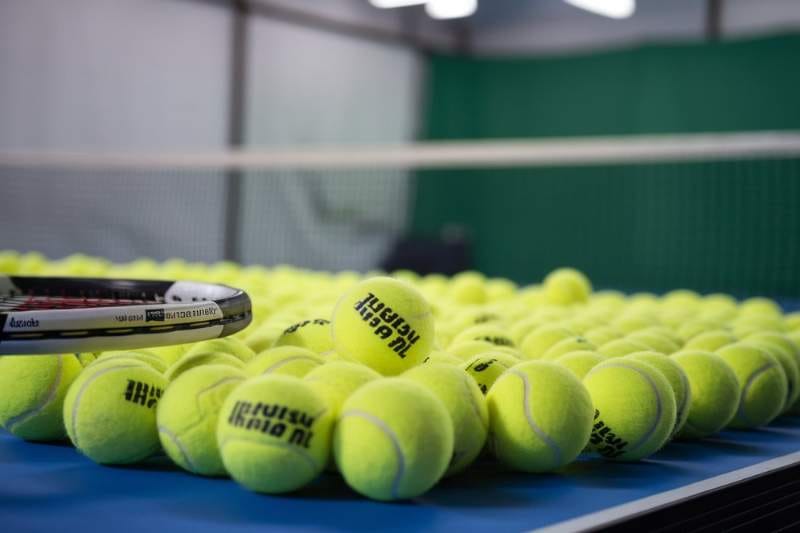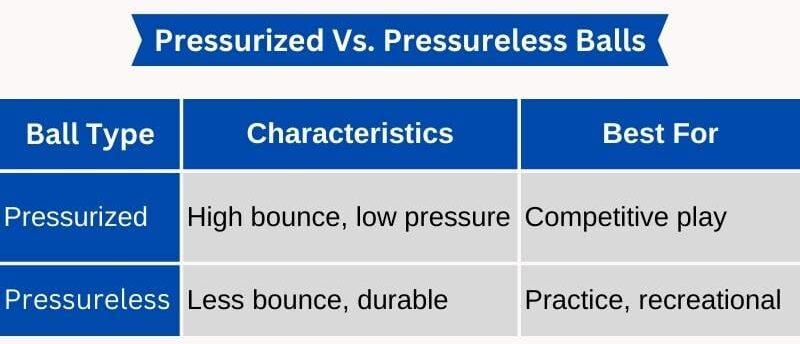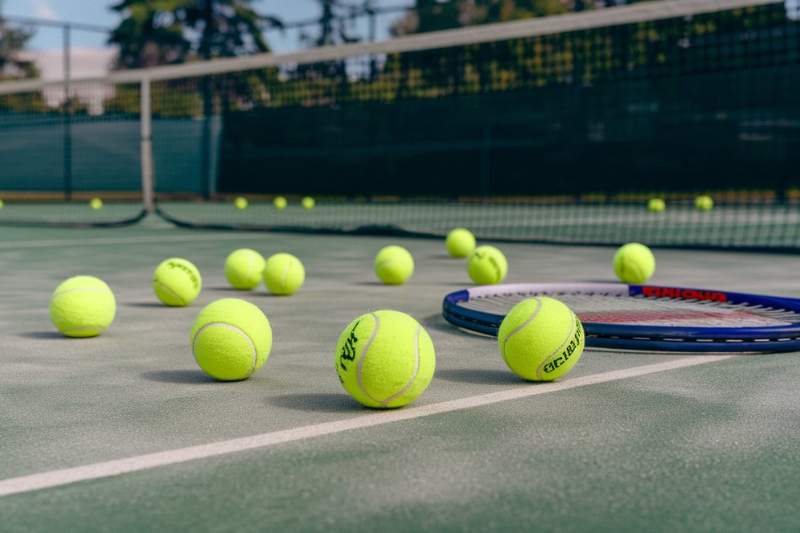Tennis balls are pressurized to ensure optimal bounce and performance. The internal pressure maintains the ball’s shape and responsiveness during play.
Tennis players and professionals alike know that the quality of a tennis ball is paramount to the game. Pressurized tennis balls are a staple on courts worldwide, engineered to deliver the consistent bounce and speed that players depend on. This pressurization, typically achieved by filling the balls with air or nitrogen at a higher pressure than the atmospheric level, provides the necessary rigidity for a lively game.
Not only does this improve the playing experience, but it also contributes to the longevity of the ball’s structure. The choice of pressurized balls is important for competitive play, where precision and ball control are the keys to victory. As such, understanding the significance of ball pressurization can develop a player’s game and appreciation for this intricate aspect of tennis equipment.
The Essence Of Pressure In Tennis Balls
The internal pressure of tennis balls is key to their performance. Factory pressurization ensures the balls maintain optimal bounce. Over time, air escapes, causing a drop in pressure. This results in a decrease in bounce and playability. A pressurized ball offers a consistent, lively response. It is important for professional play. Pressurization also affects the ball’s speed and height after hitting the surface. Balls with the right pressure provide a better game experience.
Check The Latest Price Of Tennis Balls
Manufacturing Process
The manufacturing process of tennis balls is intricate. Materials play an important role in their bounciness. A combination of rubber and felt is used. The rubber provides elasticity, while the felt ensures aerodynamic stability.
Pressurization techniques are important for the ball’s performance. Manufacturers inject air or nitrogen gas into the ball. This creates an internal pressure, making the balls springy when they hit the court.
To seal the pressure, they use a special adhesive. This ensures the ball remains airtight. The pressurization is critical for the ball’s consistency and longevity.

Physics Behind The Bounce
The physics behind a tennis ball’s bounce is fascinating. A pressurized ball means it’s filled with air at a higher pressure than the air outside. This difference in pressure makes the ball firm and springy. When a tennis ball hits the ground, energy transfers from the ball to the ground and back. This makes the ball bounce up. The amount of energy transfer depends on how pressurized the ball is. More pressure inside means a higher bounce.
Each bounce shows how energy moves between the ball and the ground. A good bounce needs a ball that’s just right in terms of pressure. Too much or too little pressure changes how well the ball plays. This is key for players to know.
Longevity And Performance Connection
Pressurized tennis balls are key for long-lasting play. Manufacturers pressurize these balls to extend their life and maintain bounce consistency. The internal pressure ensures the ball resembles new for multiple games.
During matches, players expect predictable behavior from tennis balls. Pressurization helps in maintaining bounce and speed, providing a uniform experience across different courts. This consistency is important for both player performance and fair competition.
Pressurized Vs. Pressureless Balls
Pressurized tennis balls offer a bouncy feel and consistent performance. They’re sealed in cans to maintain internal pressure. Over time, these balls can lose bounce as the internal pressure drops. Contrastingly, pressureless balls gain bounce with use. They suit extended play and practice due to their long-lasting nature.
Players must consider surface type and play frequency. Pressurized balls suit professional matches and provide optimal play on various surfaces. For casual play or practice, pressureless balls are preferred. They withstand wear and tear, saving costs over time.

Effects Of Altitude And Temperature
Understanding the effects of altitude and temperature on tennis balls is important. At higher altitudes, air is thinner. This makes tennis balls bounce higher. Players may need to adjust their swings and strategy accordingly.
Temperature also affects tennis ball pressure. In hot conditions, the air inside the ball expands. This makes the ball feel softer and bounce more. Conversely, in cold conditions, the air contracts. The ball becomes harder and bounces less. Players must adapt their game to these changes.
Adjusting the pressure of tennis balls for environmental conditions is key. Manufacturers often produce balls suited for different conditions. Players choose them based on where they play. This decision can greatly impact game strategy and performance.
Check The Latest Price Of Tennis Balls
The Life Cycle Of A Tennis Ball
Tennis balls start their life with internal pressure, important for bounce. Manufacturers seal them in pressurized cans to maintain this pressure. Once the can is opened, air starts to escape, and the ball begins to lose its lively bounce. This process is gradual, with balls transitioning from ‘fresh’ to ‘dead’ as they are used. A ‘dead’ ball has lost its pressure and is no longer suitable for official play.
Concerning disposal and recycling, options are emerging. Some programs repurpose dead tennis balls for various uses, such as floor protectors or in playgrounds. These initiatives help to reduce waste and give the balls a second life.

Innovation In Tennis Ball Technology
The pressurization of tennis balls is a key factor in their performance. Manufacturers use advanced technologies to maintain ideal pressure levels. This ensures optimal bounce and playability. Over time, innovations have led to improved pressurization methods. These methods extend the ball’s life and improve the game.
Looking ahead, the future of tennis ball design promises even more breakthroughs. Smart materials may allow balls to self-regulate pressure. This will ensure a consistent playing experience. Eco-friendly options are also in development. They aim to reduce the environmental impact of production and disposal.
Frequently Asked Questions
Why Are Tennis Balls Pressurized?
Pressurized tennis balls have a higher bounce and a faster speed, improving the game’s dynamics and making play more challenging and engaging.
How Does Pressure Affect Tennis Ball Performance?
Pressure inside the tennis ball ensures optimal bounce and flight characteristics, important for consistent playability and professional gameplay.
What Is The Lifespan Of A Pressurized Tennis Ball?
A pressurized tennis ball typically maintains its optimal performance for about 1 to 4 weeks after the can is opened, depending on usage.
Can Pressurized Tennis Balls Lose Their Bounce?
Yes, over time and with use, pressurized tennis balls lose pressure, resulting in a noticeable decrease in bounce and playability.
Conclusion
Understanding the importance of pressurization in tennis balls is important for any player of the sport. It ensures optimal performance, durability, and consistent playability. Remember, when you choose your next set of tennis balls, consider the pressurization to improve your game.
Keep the bounce in your step and your shots precise with the right equipment.


